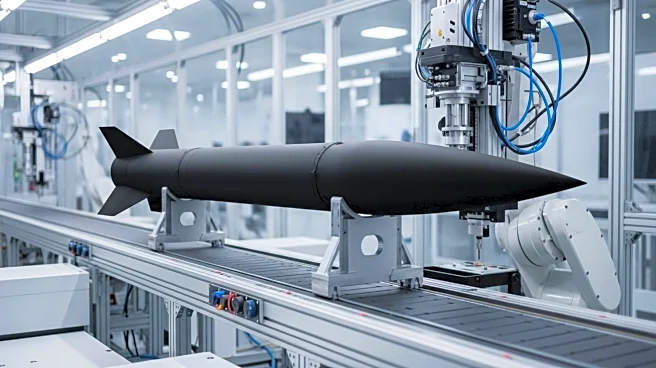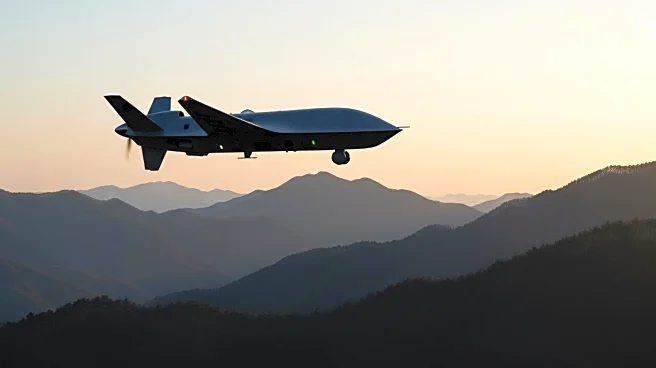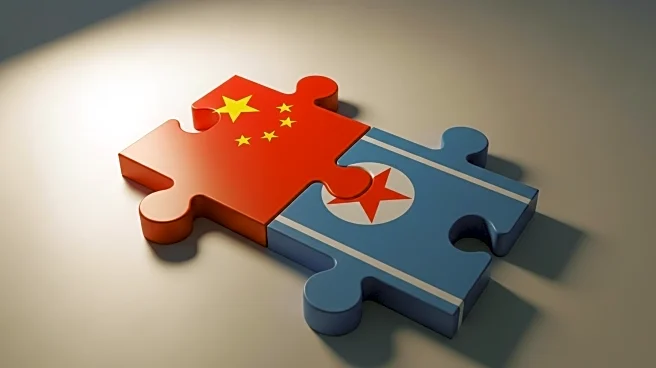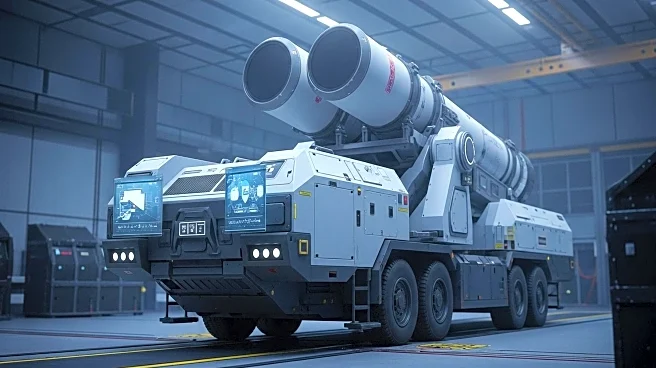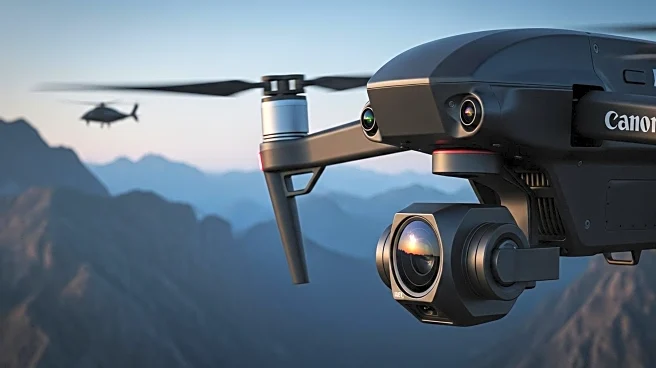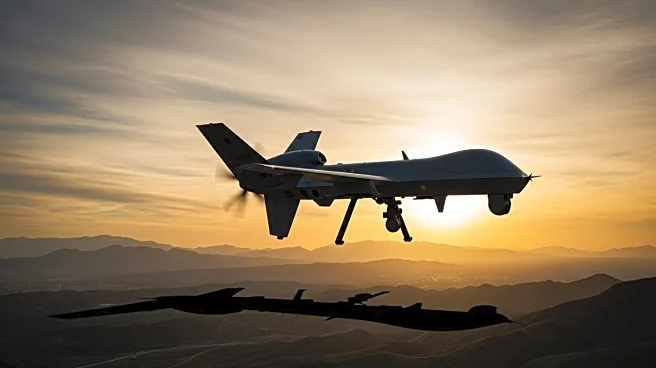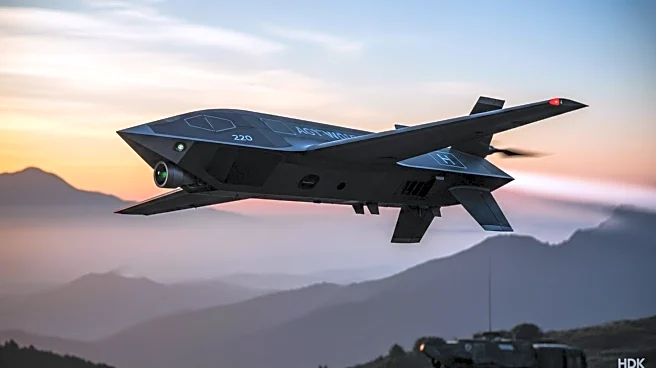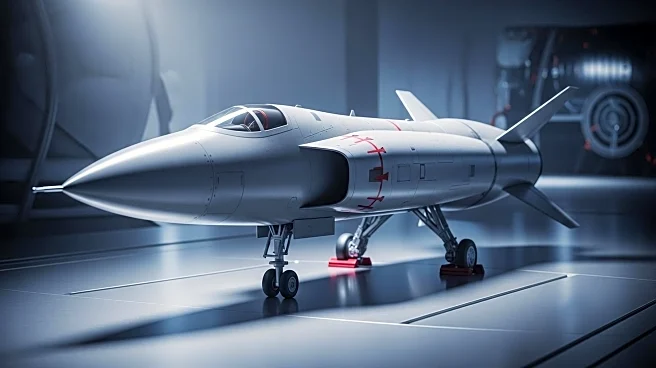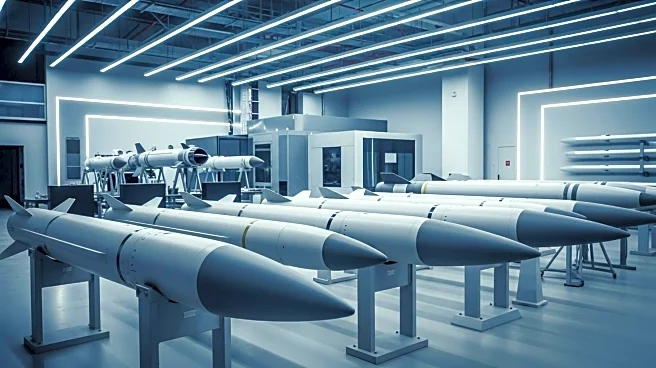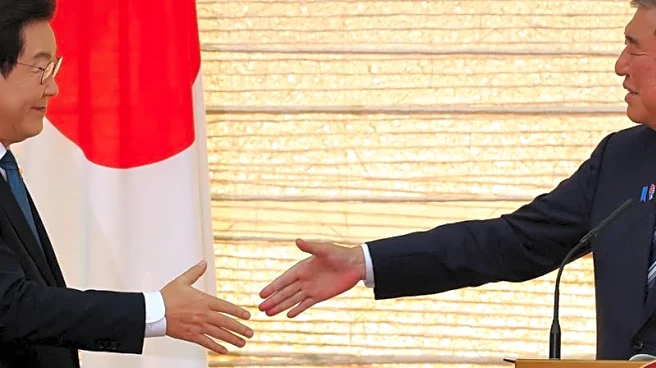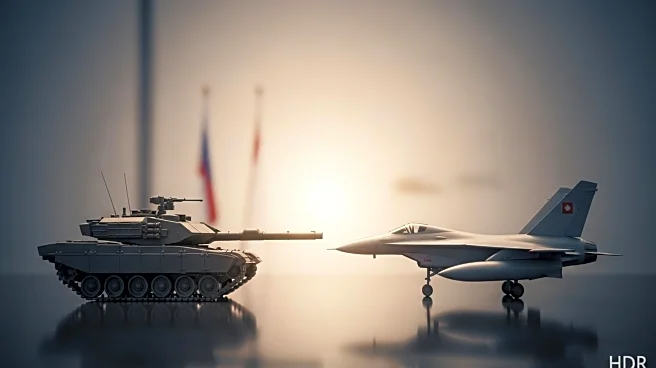What is the story about?
What's Happening?
North Korea has made significant strides in its missile program, attributed to advancements in defense manufacturing processes. The successful test of the Hwasong-18 missile in 2023 marked a milestone in the regime's goal of developing a nuclear-tipped intercontinental ballistic missile. These improvements are linked to automation efforts in missile production, which have increased productivity and quality. The focus on automated machining has allowed North Korea to develop a missile-based nuclear deterrent faster than other countries during the Cold War, despite international sanctions.
Why It's Important?
The advancements in North Korea's missile program pose a growing threat to regional and global security. The automation and modernization of its defense industry could enhance not only its nuclear capabilities but also its conventional military forces. This development raises concerns about the potential export of destabilizing military equipment to indiscriminate buyers, which could further complicate international relations and security dynamics.
What's Next?
North Korea's continued focus on expanding its missile arsenal and improving production processes suggests ongoing efforts to strengthen its military capabilities. The international community may need to reassess its strategies to address the potential risks associated with North Korea's advancements, including diplomatic and economic measures to curb its military expansion.
Beyond the Headlines
The drive for automation in North Korea's defense industry highlights the regime's ability to circumvent international sanctions and acquire advanced technologies. This raises ethical and legal questions about the enforcement of sanctions and the role of technology transfers in military proliferation.
AI Generated Content
Do you find this article useful?
